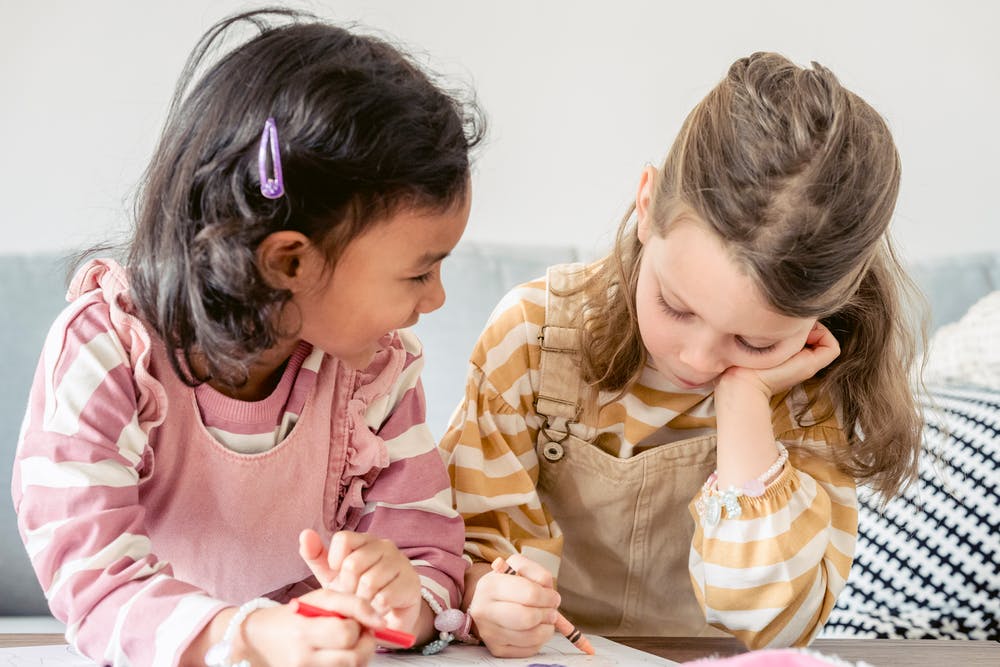Understanding Adoption Through a CDA Lens
 In the joyful bustle of #early-childhood #classrooms, it’s easy to celebrate #play-time, finger-paints, and those spontaneous bursts of giggles. Underneath that fun lies something deeper: the powerful #growth of children’s sense of belonging, identity, and emotional security. For children in adoptive families, those aspects are especially meaningful—and as #educators holding—or working toward—the Child Development Associate (CDA) Credential, you’re in a prime position to honour, support and #nurture that journey.
In the joyful bustle of #early-childhood #classrooms, it’s easy to celebrate #play-time, finger-paints, and those spontaneous bursts of giggles. Underneath that fun lies something deeper: the powerful #growth of children’s sense of belonging, identity, and emotional security. For children in adoptive families, those aspects are especially meaningful—and as #educators holding—or working toward—the Child Development Associate (CDA) Credential, you’re in a prime position to honour, support and #nurture that journey.
Let’s unpack three big child- #development practices—attachment, self-identity, and emotional #safety—and explore how, through your CDA-aligned training (think: the online programs like CDA Subject Area 8 – Understanding the Principles of Child Development and Learning, Birth to Five CDA Credential with Portfolio Review, and CDA: Stand With Respect and Professionalism) you can #craft classroom-practices that truly honour children from adoption-connected families.
1. Attachment: Building Trust & Safety
For children who are adopted, many of whom may have experienced change or separation, the foundation of their growth is an environment of secure attachment. As a CDA-trained educator, you know that children learn best when they feel safe, seen, and supported.
-
Greet them warmly each morning, look into their eyes, and use their name. These small gestures communicate: “You matter. You belong here.”
-
Create consistent routines and transitions. Consistency #nurtures trust. When children know what to expect, they relax and open up.
-
Be attuned to non-verbal cues. Some adopted children may #express anxiety, even when nothing obviously “wrong” is happening. A glance, a pause, a shift in play—they matter.
-
Encourage secure adult-child relationships in the classroom. Whether you are working with infants, #toddlers, or #preschoolers, the course “CDA Subject Area 8” you may take helps deepen your understanding of how early experiences shape development.
When children feel attached to at least one caring adult in your early childhood setting, they’re more likely to explore, create, and engage confidently. That sense of “I have someone” carries them far beyond the classroom.
2. Self-Identity: Celebrating Uniqueness & Family Story
Children need to weave a sense of identity: Who am I? Where do I come from? Where am I going? In adoptive families, identity often involves stories of arrival, belonging, and connection that are just as rich and valid as any biological narrative.
-
Create “All-About-Me” boards or family-tree activities that invite children (and families) to share their unique journey. Consider including pictures of family members, pets, places, or favourite traditions.
-
Use inclusive, adoption-positive #language. Rather than “real #parents”, say “family and grown-ups who care for you.” Your professionalism course, “CDA: Stand With Respect and Professionalism”, helps you reflect on respectful practices toward all family types.
-
Honor children’s #cultural heritage or birth heritage whenever applicable. Encourage #books, music, art that reflect diversity and invite children to bring something from #home that tells their story.
-
Incorporate classroom reflections of family diversity: adoptive, kinship, foster-to-adopt, or transracial adoptions. When children see themselves in the environment, identity becomes an anchor, not a question.
By embedding identity-affirming practices into daily routines, you help children say: “This is me. I belong. I am loved.”
3. Emotional Safety: Supporting Feelings & Connections
Emotional safety means children know their feelings matter and that tough feelings are okay. For children who are adopted, the emotional landscape may include questions, big feelings, or moments of doubt. Your CDA background equips you to meet those moments compassionately.
-
Build a “feelings corner” or safe space where children can name what they feel—“I’m excited”, “I miss my family”, “I’m upset”. Encourage adults to respond: “I see you feel … . Tell me more.”
-
Support transitions gently—those moments when the child arrives, when a home-child shifts, when someone leaves. Use predictable cues (“two-minute timer”, “song time”) to reduce #stress.
-
Partner with families (which your “Stronger Together” reading on building productive relationships guides you to do). Invite families to share what comfort measures work at home, what special words children use, or what helps them feel safe.
-
Reflect on your responses. When a child becomes emotional, do you stay calm, listen, validate? Your CDA portfolio (guided by the Professional Portfolio Guide) helps you reflect on how you support emotional safety.
When children feel emotionally safe, they are #free to learn, explore, and be curious. They don’t carry secret concerns—they carry smiles, questions, deep thoughts.
Bringing It All Together
Certain courses in your CDA journey—like the “Birth to Five CDA Credential with Portfolio Review”—provide the scaffold for deep reflection and intentional practice across birth to age five. Embrace them. Use them. Those aren’t just boxes to check—they’re tools to transform how you show up for children and families.
Think of your role as both #teacher and family-ally:
You anchor children’s trust (attachment).
You mirror their worth and story (identity).
You support their internal world (emotional safety).
When you combine all three, your classroom becomes a place where adopted children (and all children) feel not just included—but honoured, seen, and celebrated.
A Quick Action Checklist
-
Set aside 5 minutes each morning to greet each child by name, asking how they feel.
-
On your classroom wall, include a “Family World Map” or “Our Family Stories” section with diverse family types.
-
Create a simple “Feelings Journal” (drawing or writing) where children can express their big feelings; review weekly.
-
Schedule a short meeting with an adoptive family to ask: “What helps your child feel safe? What family tradition would you like to share here?”
-
Reflect monthly in your CDA portfolio: How did I support identity, attachment, emotional safety this month? What will I try next?
By weaving these practices into your day, you honour the beautiful complexity of adoption journeys. You help children say: “Here, I belong. I’m me, and that’s enough.” And that’s profound. Your dedication—backed by the CDA Credential training—makes all the difference.
💬 Stay Connected With ChildCareEd
Follow ChildCareEd on Instagram for more #early-childhood tips, resources, and professional guidance:
https://www.instagram.com/childcareed/
- CDA Bridge Bundle: Preschool without Portfolio Review
- CDA Bridge Bundle: Family Child Care without Portfolio Review
- CDA Bridge Bundle: Infant/Toddler without Portfolio Review
- Birth to Five CDA Credential with Portfolio Review
- CDA Home Visitor Subject Area 7 Part 3 Birth to 5
- CDA Family Child Care Credential with Portfolio Review


